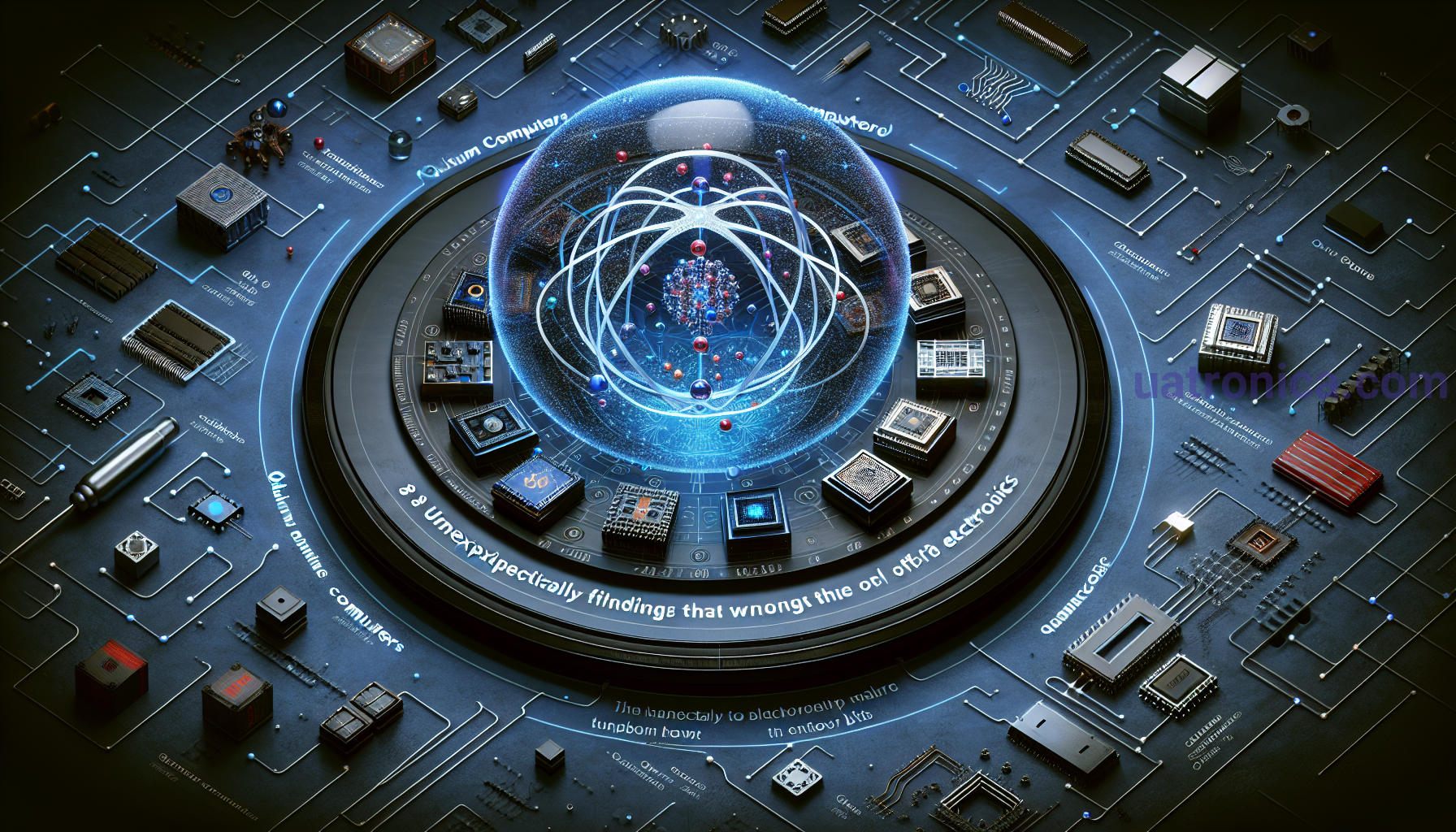Revolutionary breakthroughs in the world of semiconductors: 8 unexpected discoveries that will transform the electronics of the near future
In the world of semiconductors, even small discoveries can have a big impact on electronics. Companies and scientists continue to search for innovative solutions and materials that will improve the properties of semiconductors and improve technological achievements. This article presents 8 unexpected discoveries in the world of semiconductors that have the potential to transform the electronics of the near future.
1. Graphene
One of the most promising materials for semiconductor electronics is graphene. Graphene is a monolayer of crystalline carbon that has unique electronic properties. It is extremely conductive, has high mechanical strength and thermal conductivity, and a rich set of optical properties.
One of the promising applications of graphene is its use in electronics, where it can replace silicon, which is the main material for the manufacture of semiconductor devices. Graphene can improve the performance and speed of semiconductor devices, as well as reduce their power consumption.
Various methods are used to obtain graphene, such as epitaxy on metal substrates or mechanical attrition methods. However, to date, obtaining bulk graphene remains a challenge. High hopes are placed on the commercial production of graphene in the near future.
2. Perovskite
Perovskite is a class of materials that have a crystal structure similar to that of perovskite. They have unique physical properties that make them ideal candidates for use in solar cells, electrolyte membranes, display panels, and other electronic devices.
One of the most interesting properties of perovskite is its ability to atomic rearrangement, which leads to changes in its electrical properties. This allows perovskites to be used in various types of electronic devices, including transistors, LEDs, and solar cells.
Perovskite represents great potential for the development of the electronic industry. In a recent study, the well-known company Samsung announced its ability to produce perovskite solar cells with an energy conversion efficiency of more than 20%, which is high for silicon-based solar cells.
| Brand | Article | Price |
|---|---|---|
| Revolutionary breakthroughs in the world of semiconductors: 8 unexpected discoveries that will transform the electronics of the near future | 12-803 Geyer | UAH 50 |
| Review: 13 Greatest Advances in the Semiconductor World. Ingenious technologies that will change the future | FT2232H Mini FTDI module | 100 hryvnias |
3. Quantum dots
Quantum dots are nanostructures of semiconductor materials with a three-dimensional overall size that can be used to determine their electronic and optical properties. They have very small dimensions, about 2 to 10 nanometers, which leads to changes in their optical and electrical properties.
Quantum dots can be used in a variety of devices, from LEDs to solar cells. They have a wide range of colors, which allows you to create bright and saturated displays. In addition, quantum dots are highly energy efficient, making them ideal for use in electronics.

One of the main advantages of using quantum dots in various devices is their high quantum efficiency. They are able to absorb and emit light with a high quantum yield, which improves the performance of the device and reduces its energy consumption.
4. Molecular electronics
Molecular electronics is a new direction in electronics in which molecules are used as building blocks to create electronic devices. Compared with traditional semiconductor materials, molecular materials have many advantages, in particular, molecular electronics are more scalable, cost-effective, and have low power consumption.
In molecular electronics, as a rule, unimolecular devices are used, in which the molecules perform the functions of conductors or semiconductors. These devices have a lot of potential for the development of electronics, for example, they can replace silicon in the production of processors.
Molecular electronics are already being used in a number of prototypes, but much research and development is still needed for industrial-scale production. However, the development of molecular electronics has great potential to revolutionize the world of electronics.
5. Tunnel transistor
Tunnel transistors are a special type of transistor that uses the tunneling phenomenon to transfer charge across a barrier energy potential. This is a new type of transistor that can operate at higher speeds and has lower power consumption compared to traditional silicon-based transistors.
In tunnel transistors, current can flow through the material if it is in a quantum dot. This allows tunnel transistors to operate at higher frequencies and suitable for use in modern devices.
Tunnel transistors are already used in a number of prototype devices, but their commercial use has not yet been achieved. However, several companies, including Intel, have already announced their plans to release commercial products based on tunnel transistors in the near future.
6. Terahertz electronics
Terahertz (THz) electronics is a branch of electronics that deals with high-frequency wavelengths in the 0.1-10 THz range. This range of electromagnetic waves is between the microwave and infrared ranges.
Terahertz electronics have the potential to change the way we interact with electronics. It can provide high-speed wireless connectivity, X-ray scanning capabilities, and more.
Terahertz electronics are already being used in some devices, such as scanners for centralized control at transport hubs and wireless access points. However, the development of terahertz electronics requires a lot of research and development, including solving the problem of creating devices that operate at commercial temperatures.

7. Quantum computing devices
Quantum computers are special devices that use the principles of quantum mechanics to perform calculations.
One of the key elements of quantum computers are qubits, which replace classical bits. Qubits can be in a superposition and entangled, which allows for a large power of information processing.
Quantum computers have the potential to solve quite a large number of problems that are difficult for classical computers. However, to date, industrial quantum computers are still experimental devices, and a lot of work is still needed for their widespread use.
8. Organic electronics
Organic electronics is a branch of electronics that uses organic (carbon) compounds to create electronic devices. Organic compounds are biologically soluble and do not take up a lot of space, which makes it possible to make extremely thin and flexible devices.
Organic compounds can also be easily modified to create different types of devices, including displays, sensors, solar cells and other devices.
Organic electronics is already being used in a number of prototype devices, but its widespread adoption still requires a lot of research and solving problems related to the efficiency and stability of organic components.
Conclusion
Revolutionary breakthroughs in the world of semiconductors are already leading to significant improvements in electronics. From graphene and perovskite to quantum dots and organic electronics, these discoveries open new possibilities for creating more productive, energy-efficient and functional devices.
Although several of these findings are already in use in industry, many of them still require additional research and technological development before they become widely accepted for several years for their commercial use. However, over time, these breakthroughs in the world of semiconductors will certainly transform the electronics of the near future.
Sources:
- https://en.wikipedia.org/wiki/Graphene
- https://uatronica.com/novyny-elektronnyh-komponentiv/oglyad-peremozhcziv-nagorod-gsa-2023-ta-trendy-2024-roku-u-sviti-napivprovidnykovyh-materialiv-review/
- https://uatronica.com/novyny-elektronnyh-komponentiv/revyu-13-najvydatnishyh-dosyagnen-u-sviti-napivprovidnykiv-genialni-tehnologiyi-yaki-zminyat-majbutnye/










